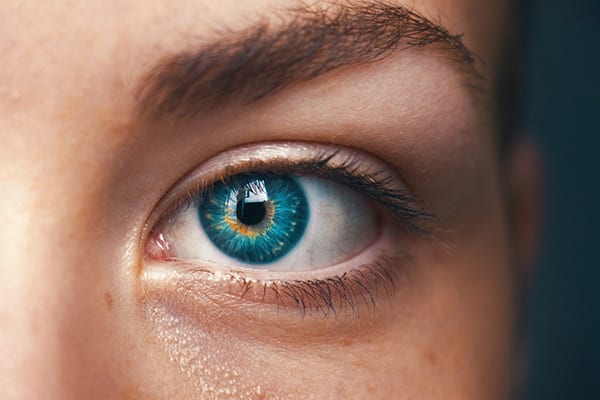A variety of treatment modalities are available for the correction of presbyopia-spectacles, contact lens and surgical approaches. Let’s take a closer look at Contact Lens’ Monovision as an option

Spectacles work great for Presbyopia, no doubt about that. But it’s not always the first choice for the young and active patient in his 40s who refuses to feel old. Thankfully you, as an optician or optometrists, can also offer your young patients a variety of contact lens related corrections.
Bifocal and Multifocal lens designs need appropriate selection and fitting skills but one of the easiest options to correct near vision for a presbyopia is by doing Monovision. This option is not really new actually and has been practiced for decades. Yet for some reason, it hasn’t gained the popularity that it truly deserves.
Click on the above image to view the article’s flipbook edition
Monovision
Under Monovision the practitioner usually chooses to correct the dominant eye for distance viewing and the fellow eye, for near. It works on the principle that the visual system can suppress the central focus image and, thus, enables the object of interest to be seen clearly.
To make it easier to understand let us say that if one looks out far from a window the mesh of the window is ignored by the brain and it does not see that image and if one focuses on the mesh it becomes clear and the far off image is now ignored. It’s all about the brain ignoring the image out of focus.
Similarly, in the monovision contact lens concept, the brain sees both images far and near but it will focus on the one where the patient desires to and ignore the other one.
Monovision is ideal for patients who started wearing lenses years ago and are now turning presbyopia. A modification to their power means simplifying their lives to work for near also. Active people with the desire to look young are best for this.
Advantages Of Monovision
The major advantage of true monovision is the simplicity of fitting a single vision lens to each eye. This technique is well suited to many presbyopes and usually requires less chair time (uncomplicated lenses) as fewer trail lenses are required. Distance and near can be optimized accordingly thus allowing practitioner wide range. These are ideal for social/occasional users. There is no additional cost to the existing user. It is simply modifying the power
Disadvantages Of Monovision
The monovision technique relies on an innate ability of the wearer to suppress visual information that is either not beneficial or confounds the preferred visual input. This can result in some disruption to their binocular status. Such an effect may become apparent when testing the stereo acuity and contrast sensitivity functions at near and/or distance. The results will be lower than when wearing spectacles. While monovision is generally well-tolerated by most presbyopes, the compromises inherent in monovision may not be as well-tolerated as the disparity between the two retinal images increases, i.e. as the addition increases in magnitude and the ‘imbalance’ between the eyes increases.
Having said that, it’s good to know that in controlled clinical trials, monovision designs have usually had a success rate equal to or above that of the bifocal
Modified Monovision
In this variation, a single vision contact lens is worn on the distance eye and a bifocal contact lens is worn on the near eye. Modified monovision, can provide sharper distance vision than standard monovision, while still providing acceptable near vision without reading glasses for many close-up tasks. The distance power of the bifocal lens also can be adjusted to provide sharper vision at arm’s length for tasks such as computer work. This improves binocular summation and offers some level of stereo-acuity to the monovision wearer.
Besides Monovision there are various other correction options like Simultaneous vision design, Alternating bifocal design, Aspheric design, and Diffractive bifocals. However, Monovision perhaps has the simplest method of fitting patients with presbyopia, especially those who need it for occasional wearing. You don’t need to be a specialist to fit them. Just having an understanding of the basics of contact lenses is enough to start. With regards to the Contact Lens material, Silicone hydrogels and one-day SiHi seem to be the preferred choice for most users.
Click here for Fitting Guidelines and steps
Credits : Prof Monica Chaudhry, Sushant Shah, Roshni Sengupta, Kamal Thakur
Reference
1. Beers AP, van der Hyde GL. Age-related changes in the accommodation mechanism. Optom Vis Sci 1996; 73:235-42.
2. Maisel H, Ellis M. Cytoskeletal proteins of the aging human lens. Curr Eye Res 1984; 3:369-81.
3. Kleinstein RN. Epidemiology of presbyopia. In: Stark L, Obrecht G, eds. Presbyopia: recent research and reviews from the third international symposium. New York: Professional Press Books, 1987:12-8.
4. Michaels DD. Visual optics and refraction: a clinical approach, 3rd ed. St. Louis: CV Mosby, 1985:419-22.
5. Bennett ES. Remba MJ, Weissman BA. Contact lenses and the elderly patient. In: Rosenbloom AA, Morgan MW, eds. Vision and aging, 2nd ed. Boston: Butterworth-Heinemann, 1993:251- 89.
6. Bruce J. W. Evans. Monovision: a review. Ophthal. Physiol. Opt. 2007 27: No. 5
7. The IACLE Contact Lens Course. Module 8- Special Contact Lens Fitting
8. Gary L. Mancil, Ian L. Bailey, Kenneth E. Brookman, J. Bart Campbell, Michael H. Cho, Alfred A. Rosenbloom, James E. Sheedy. Care of the Patient with Presbyopia. American Optometric Association, 2011
9. Managing the Presbyope, Essential Contact Lens Practice
10. Gary Heiting. Monovision with contact lenses. All About Vision













